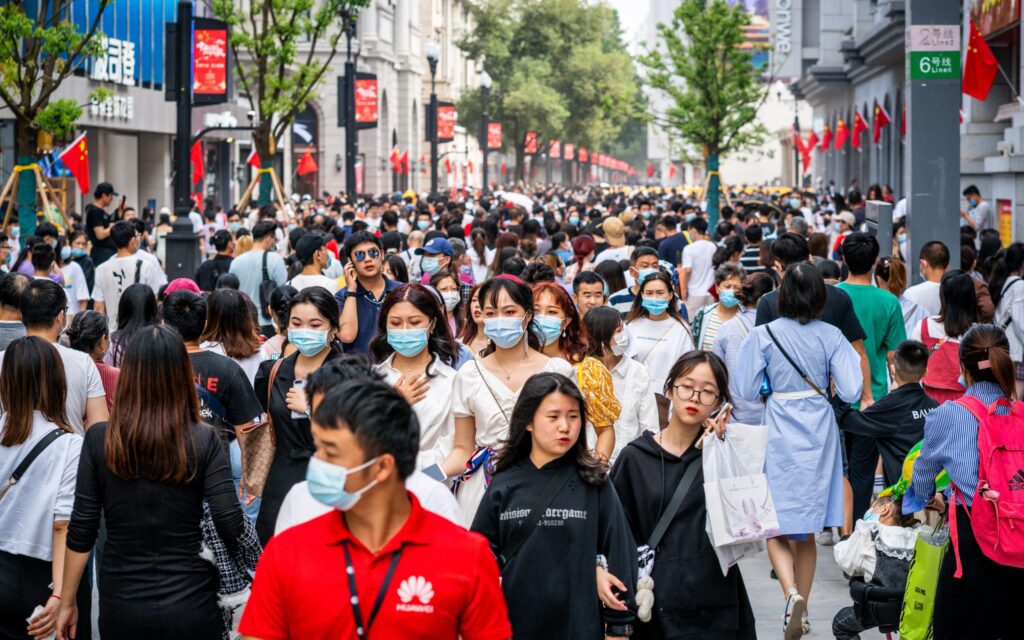This article was originally published by WITH.
The novel coronavirus has damaged industries globally and tourism has suffered its share of losses. As every country struggles to revive travel, China has found a way to keep its travelers moving. Indeed, even as the country decided to ban international travel, inbound tourism continues to receive strong support and household budgets are shifting to focus on mainland activities — global tourism stakeholders would do well to take note even at a moment of limited outbound Chinese travel.
Important changes in Chinese traveler behavior over recent years must also be considered. Outbound tourism preferences have rapidly shifted from group travel to hyper-connected, independent modes. Although many global tourism brands and institutions have already adapted digitally to address new needs, the pandemic has forced yet another upgrade, encouraging new ways to stay connected with Chinese tourists.
A year on from COVID-19’s emergence, Annabelle Du Defrance, Client Partner at WITH, analyzes the state of China’s tourism industry and how the global travel industry can turn these new challenges into hidden revenue opportunities.
Tourism’s Long Road To Recovery
In China, the government blocked all outbound tourism at the end of January 2020 to control the epidemic. Chinese overseas spending was estimated at $280 billion in 2018 by the UNWTO and the loss to businesses dependent on Chinese tourist money has been devastating.
Enduring health and safety concerns means only 34 percent of Chinese consumers are confident in resuming their international tourism-related spendings in the short term.
The Bottom Line: Responding to Chinese concerns about health and safety will be essential to restoring the trust necessary to reboot previously thriving tourism activities.
The Changing Face Of Chinese Travelers
With only 10 percent of China’s population currently holding a passport, outbound travelers remain largely higher-middle and upper-class Chinese — an audience of around 250 million Chinese. Millennials dominate this group and travel in tour groups or autonomously with their families, though recent years have seen the emergence of younger Chinese tourists, Gen Z-ers, traveling independently. Pre-Covid, the preferred overseas travel destinations included short-haul Asian regions, followed by Europe (nearly a quarter of Europe’s market share goes to France) and North America (led by the United States).
The Bottom Line: Chinese travelers are increasingly young and technology-driven. Beyond the shift of preferred travel settings — from group tourism to independent travel — they spark a need for innovative solutions, thus driving the travel sector’s recent digitalization movement.
Digital Platforms
Gone are the days of jam-packed buses dropping off eager Chinese travelers at pre-selected cultural sites in large cities. Instead, a new wave of tourists has emerged — one keen on customized trips. Smartphones have become an essential component in aiding this preference, with many travelers using apps such as Little Red Book (RED) or Mafengwo to search for the next “place to be” or perfect photo opportunities.
Throughout the pandemic, these digital tools have been attracting an ever greater number of tourism stakeholders who are facilitating bookings and strengthening the link between destinations and travelers. For instance, the well-implemented Chinese mobile payment platforms WeChat Pay and AliPay are gradually making their way into foreign destinations. Retail outlets, such as the Lancôme flagship store on Avenue des Champs Elysées and Les Néréides or Fragonard, are using RED to engage new audiences.
The Bottom Line: Whether it is to post souvenir photos on RED, pay by mobile transfer on WeChat, or book flights and local activities through Fliggy or Ctrip, Chinese platforms are providing a variety of features dedicated to tourism.
Domestic Travel: The Safest Option
Despite global hurdles, the Chinese travel economy’s recovery is rapidly progressing, as domestic tourism and “revenge spendings” continue.
As such, 2020’s Golden Week showcased a huge demand both online and offline, representing a great opportunity for brands to exploit new, post-pandemic retail market trends. Meanwhile, luxury brands placed their bets on “inside consumption.”
The Bottom Line: Two main trends are being observed. First, audiences are rediscovering their hometowns and nearby destinations with staycations. Secondly, travelers are looking to explore more remote, previously less-traveled Chinese tourism destinations.
Golden Week: The Post-Pandemic Revenge Holiday
This October’s Golden Week was particular for two reasons: First, it was the largest holiday in China since the outbreak of the pandemic. Second, the overlap of National Day and the Mid-Autumn Festival extended the holiday’s duration to eight consecutive days. Over 637 million people traveled within China, generating around $473 billion in tourism revenue — an increase of 70 percent compared to 2019.
For the sake of public hygiene, many museums and tourist sites moved part of their activities online during Golden Week and restricted in-person visits. According to Kuaishou, China’s second-largest short-video sharing platform, 213,000 people watched the moon via livestream on the night of the Mid-Autumn Festival. Moreover, even after the lift of confinements, the stay-at-home economy continued with data from large retailer Suning.com showing livestream shopping sales growing by 1,854 percent compared to 2019’s Golden Week.
The Bottom Line: Chinese audiences remain keen to travel and spend, as shown by the rush to the southern tropical island of Hainan. During the Golden Week holiday, around 443,000 traveled through Hainan’s Haikou Meilan Airport; duty-free spending doubled to $160.
Stay tuned for part two of this story.




